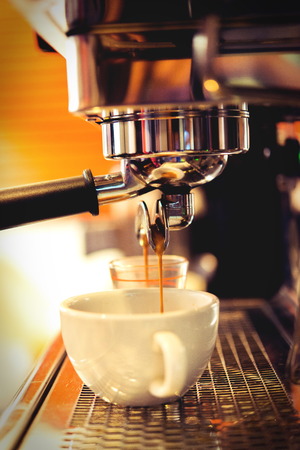Introduction: The British Coffee Scene and Brewing Preferences
In recent years, the United Kingdom has experienced a remarkable transformation in its coffee culture. While tea may still reign supreme in many British households, the love for coffee has grown exponentially, with artisan cafes and independent roasters popping up from London to Edinburgh. This surge in interest is not just about enjoying a cup of coffee but also about exploring diverse brewing methods that suit individual preferences and lifestyles. From the bustling streets of Manchester to quiet Cornish villages, Britons are increasingly discerning when it comes to how their coffee is prepared. Whether you favour a traditional French press at home, enjoy the ritualistic pour-over, or prefer the convenience of an electric filter machine, selecting the right brewer is becoming as personal as choosing your morning paper. In this guide, we’ll delve into both manual and electric coffee brewers, equipping you with the knowledge needed to navigate this vibrant landscape and find a brewing method that perfectly matches your palate and daily routine.
2. Manual Brewers: Tradition, Control, and Ritual
For many British coffee aficionados, manual brewing methods epitomise the artistry and ritual of coffee making. Unlike their electric counterparts, manual brewers such as the pour-over, French press, and AeroPress offer unparalleled control over every variable—allowing users to tailor each cup to personal taste. The process itself is steeped in tradition and ceremony, appealing to those who cherish both the journey and the result.
The Charm of Manual Brewing
Manual brewers require a hands-on approach that invites you to engage with your coffee from start to finish. Whether it’s blooming freshly ground beans for a Chemex or gently pressing down a plunger on a classic cafetière, these moments create a connection between brewer and brew. In Britain, where quality and ritual are highly valued, this tactile process resonates strongly with discerning palates seeking authenticity and craftsmanship.
Comparing Popular Manual Brewers
| Brewer | Key Features | Ideal For |
|---|---|---|
| Pour-Over (e.g., V60, Chemex) | Precision control over water flow, temperature, and extraction time; clean, nuanced flavour profile | Those who enjoy experimenting with grind size and technique to highlight subtle notes in speciality beans |
| French Press (Cafetière) | Full-bodied brew with rich mouthfeel; simple operation; ideal for coarser grinds | Coffee lovers seeking robust flavour and an easy morning ritual steeped in British café culture |
| AeroPress | Portable, quick brewing; versatile in producing espresso-like or filter-style coffee; minimal cleanup | Coffee enthusiasts after convenience without sacrificing quality—perfect for home or office use |
Why Manual Brewing Appeals in the UK
The hands-on nature of manual coffee makers speaks to a British appreciation for tradition and mindful preparation. Many find the meditative aspect of pouring hot water over grounds or waiting for a French press to steep not only therapeutic but also rewarding. It’s about slowing down and savouring both the process and the final cup—qualities that align well with Britain’s evolving speciality coffee scene.

3. Electric Brewers: Convenience and Consistency
For those living in the UK, where mornings can be brisk and time is often at a premium, electric coffee brewers have become a staple in many homes and offices. These machines—ranging from classic drip brewers to modern pod systems—offer a level of convenience that manual methods simply cant match.
The Advantages of Electric Coffee Machines
Electric brewers are celebrated for their ability to deliver consistent results with minimal effort. With just the push of a button, you can enjoy a fresh cup of coffee while tending to other morning rituals. The automation inherent in these devices ensures that every brew is as reliable as the last, removing much of the guesswork and margin for error found in manual brewing techniques.
Drip Brewers: A British Favourite
Drip coffee makers remain a popular choice across the UK thanks to their ability to brew larger volumes, making them ideal for families or busy workplaces. Their programmable features allow users to set up their morning brew in advance—a true blessing on those early starts during dark winter months. Additionally, thermal carafes help keep coffee warm without the risk of over-extraction or bitterness, ensuring your second cup tastes as fresh as the first.
Pod Systems: Speed Meets Simplicity
Pod-based machines, such as Nespresso or Tassimo, have surged in popularity due to their exceptional speed and ease of use. These compact units suit urban lifestyles where kitchen space may be limited and time is always of the essence. Pod systems offer an impressive variety of blends and flavours, catering to diverse British palates while minimising waste and clean-up time.
Catering to Fast-Paced British Lifestyles
The fast pace of modern British life—be it bustling London commutes or tight work schedules—means efficiency is paramount. Electric brewers align perfectly with this need by providing quick, fuss-free coffee without compromising on taste. Whether you value the robust consistency of drip brewing or the tailored convenience of pods, these machines offer a dependable solution that fits seamlessly into daily routines across the UK.
4. Brewing Quality: Taste, Flavour Profiles, and Technical Considerations
When selecting a coffee brewer, discerning drinkers in the UK often prioritise extraction quality and flavour complexity. This section compares manual and electric brewers, focusing on taste nuances and technical considerations that influence your daily cup.
Extraction Quality: Precision Versus Consistency
Manual brewers such as the V60 or AeroPress give enthusiasts full control over variables like water temperature, pouring technique, and brew time. This hands-on approach allows for tailored extraction, ideal for those seeking to highlight specific characteristics of single origin coffees. In contrast, electric machines—be it a bean-to-cup system or an automatic drip brewer—provide consistent results at the push of a button, reducing the risk of human error but potentially limiting nuanced adjustment.
| Brewer Type | Control Over Variables | Consistency | Ease of Replication |
|---|---|---|---|
| Manual | High (temperature, pour rate, grind size) | Variable (depends on user skill) | Challenging; requires experience |
| Electric | Moderate to Low (pre-set programmes) | High (automated process) | Easy; reliable cup each time |
Flavour Profiles: British Preferences Explored
The UK palate often gravitates towards a well-balanced brew with pronounced sweetness and clarity—qualities easily accentuated by manual methods. Manual brewers encourage experimentation with lighter roasts and specialty beans, revealing floral notes and delicate acidity. Conversely, electric brewers excel with medium to dark roasts commonly found in British supermarkets, producing robust cups that are full-bodied and straightforward, aligning with classic café-style preferences.
Technical Considerations: Water Quality and Temperature Control
Britain’s varying water hardness can impact flavour extraction significantly. Manual brewing enables users to adjust their recipe in response to local water conditions—a critical factor in London versus Edinburgh. Electric machines may include built-in filters or temperature stabilisation features, but typically offer less flexibility in addressing regional water issues.
Summary Table: Key Technical Comparisons
| Manual Brewers | Electric Brewers | |
|---|---|---|
| Taste Customisation | Highly adaptable; favours experimentation | Largely fixed; depends on machine settings |
| Response to Water Hardness | User-controlled adjustments possible | Some filtration; limited user input |
| Brew Temperature Precision | User-monitored; variable by kettle choice | Machine regulated; typically stable but pre-set |
| Suits Which Beans? | Lighter/specialty roasts; single origins | Darker blends; supermarket favourites |
| Sensory Experience for Enthusiasts? | Engaging; hands-on learning process | Straightforward; convenience focused |
The decision between manual and electric brewers ultimately comes down to your priorities: whether you value the craft and exploration of flavour—or convenience and consistency—in your morning ritual. Understanding these technical differences will help you make an informed choice suited to both your taste buds and lifestyle within the context of the UK’s unique coffee culture.
5. Practical Considerations: Cost, Accessibility, and Sustainability
When selecting between manual and electric coffee brewers, it is essential to weigh practical aspects such as financial investment, user-friendliness, ongoing maintenance, and environmental impact, particularly within the context of the British market.
Cost: Initial Outlay and Long-Term Value
Manual coffee brewers—such as cafetières (French presses), pour-over drippers, and AeroPress—are typically more affordable upfront than their electric counterparts. Entry-level models are widely available across UK retailers, with prices ranging from under £10 to around £40 for premium hand-brewing kits. Electric machines like pod systems or bean-to-cup automatics demand a higher initial investment, often exceeding £100 for reputable brands. However, frequent use may justify the expense due to convenience and consistency.
Accessibility: Availability and Everyday Use
Both categories offer broad accessibility in Britain. Manual devices are compact, require no power source—ideal for small kitchens or travel—and can be found in supermarkets and specialist shops alike. Electric brewers need mains electricity and more counter space but appeal to those seeking a streamlined morning routine. For those living in smaller flats or student accommodation, manual options often prove more practical.
Maintenance: Upkeep and Durability
Manual brewers shine when it comes to simplicity of cleaning and minimal parts prone to failure; most only require a quick rinse and occasional deep clean. In contrast, electric machines involve regular descaling (particularly with hard UK tap water), replacement of filters or seals, and sometimes professional servicing. The longevity of manual brewers can be superior if cared for properly.
Sustainability: Environmental Impact
Sustainability is increasingly important for British consumers. Manual brewers generate minimal waste—especially when paired with reusable metal filters or compostable paper filters—and have negligible energy consumption during brewing. Electric machines consume more electricity and certain models (notably pod-based systems) create significant plastic or aluminium waste unless compatible with local recycling schemes. Opting for sustainable brands or investing in energy-efficient models can mitigate these concerns.
Summary for UK Coffee Enthusiasts
Ultimately, your choice hinges on balancing upfront costs, everyday practicality, required maintenance, and eco-friendliness. Manual brewers offer affordability, portability, and minimal environmental footprint—well-suited to the British penchant for both tradition and sustainability. Electric machines cater to convenience-seekers prioritising speed and automation, though they come with higher long-term commitments in both cost and care.
6. Which Brewer is Right for You?
Selecting the ideal coffee brewer ultimately comes down to your lifestyle, preferences, and the unique nuances of British living. To help you make an informed decision, consider the following scenarios and recommendations:
For the Busy Commuter
If your mornings are a flurry of activity and you need a reliable cup before catching the train, an electric coffee maker such as a pod machine or automatic drip brewer could be your best ally. These devices offer consistency, speed, and minimal clean-up—perfect for those who value convenience over ceremony.
For the Weekend Connoisseur
If you cherish slow Saturday mornings and enjoy tinkering with variables to achieve the perfect brew, manual options like a pour-over set or French press might suit you well. These methods allow for hands-on control and are ideal for experimenting with different beans sourced from your local roastery or farmers’ market.
For Flat-Dwellers with Limited Space
Many British homes are compact, so space-efficient brewers such as AeroPress or single-serve pod machines work wonders in smaller kitchens. Look for models with integrated storage or stackable designs to maximise precious countertop real estate.
For Social Gatherings and Afternoon Teas
If you often host friends or family, a larger-capacity brewer—like a filter coffee machine or Chemex—enables you to serve several guests at once. These options are excellent for sharing a pot during a cosy catch-up or offering an alternative to tea during afternoon gatherings.
Personal Preferences and Sustainability
Consider how much control you want over your brew, your tolerance for cleaning up, and your environmental priorities. Manual brewers generally produce less waste and grant more flexibility, while electric models excel in efficiency and ease-of-use. For those conscious of sustainability, look out for machines with recyclable pods or opt for methods that require only paper filters or none at all.
In summary, there’s no universal answer—your perfect brewer should align with both your daily routine and personal values. Reflect on when and how you drink coffee, the space available in your home, and whether you prioritise tradition or technology. With these factors in mind, you’ll find a brewing companion that elevates every cup to new heights.


